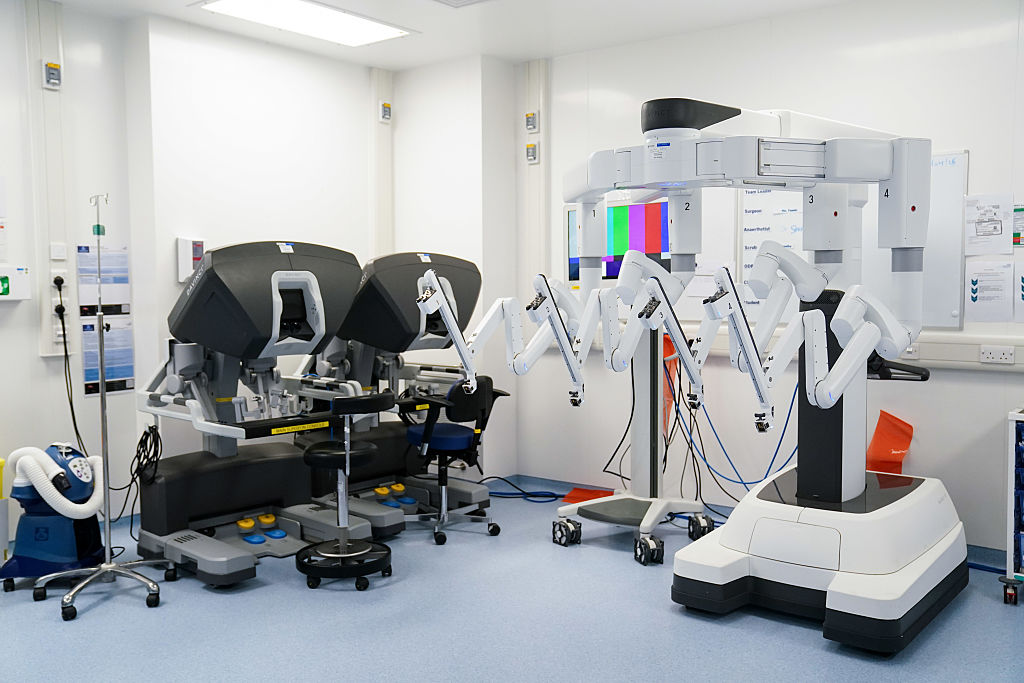In a world where artificial intelligence is quickly revolutionizing industries, the field of medicine is witnessing perhaps its most profound transformation. One remarkable development is the AI driven surgical robot, a technological marvel redefining the way surgeries are performed. Among the pioneers of this shift is Intuitive Surgical, whose DaVinci surgical robot has taken the operating room by storm offering precision, reduced risk, and new hope for patients.
But what happens when artificial intelligence takes an even more proactive role not just assisting, but leading surgical procedures? A recent experimental surgery performed by an AI driven surgical robot has reignited the debate over human trust in machines, the ethics of automation in healthcare, and the possibilities of a safer, smarter future.
The DaVinci System: A Game Changer in Surgical Innovation
Introduced in the late 1990s, the DaVinci surgical system was groundbreaking. Developed by Intuitive Surgical, it allowed surgeons to perform delicate and complex procedures with minimal invasiveness. Through high definition 3D vision and robotic arms with unmatched dexterity, DaVinci enabled surgeons to operate remotely via teleoperation. It became a valuable tool in urology, gynecology, and cardiothoracic surgery.
Dr. Michael Wong, a robotic surgery pioneer at Stanford Health, states, “The DaVinci robot has revolutionized patient recovery. We’re seeing less pain, faster discharges, and reduced infections.”
While the DaVinci system has typically been operated by human hands, its AI components have gradually advanced offering predictive assistance, haptic feedback, and anomaly detection.
Experimental Surgery by AI-Driven Surgical Robot
Earlier this year, a collaborative team of researchers and surgeons at Johns Hopkins University performed a fully autonomous experimental surgery on a pig’s soft tissue. The AI driven surgical robot a next gen iteration inspired by the DaVinci system executed the procedure without direct human guidance.
What makes this surgery historic is not just the outcome, which was flawless, but the way AI processed real time variables adjusting for tissue movement, variations in anatomy, and even compensating for slight tremors in the lab setting.
Dr. Anthony Monroe, biomedical engineer and project lead, shared, “This AI driven surgical robot demonstrated adaptability and judgment once thought exclusive to human intellect. It’s not just repeating actions it’s thinking.”
Expert Opinions on Human AI Surgical Collaboration
Despite the milestone, experts urge caution. Dr. Lisa Bernard, Chair of Robotics at Mayo Clinic, emphasized that AI should remain a tool not a replacement for skilled surgeons. “AI doesn’t feel pressure. It doesn’t suffer fatigue or make impulsive decisions. But it also doesn’t understand patient history or emotional nuances,” she says.
The balance, she argues, is in hybrid collaboration. Humans bring empathy and intuition; robots offer consistency and precision.
Moreover! liability concerns remain unresolved. In the event of a surgical error by a fully autonomous AI driven surgical robot, who is to blame? The developer? The supervising surgeon? These are questions the medical community and lawmakers must answer.
A Glimpse of Robotic Precision in Action
Rachel Bloom, 48, underwent a robotic hysterectomy last year. Though not performed autonomously, the robotic assistance made a remarkable difference.
I was walking the next day, she recalls. “Minimal scars, almost no pain. I still can’t believe a robot helped operate on me.”
Rachel’s case isn’t rare. According to the American Hospital Association, over 1 million robotic assisted surgeries are performed each year, and patient satisfaction is overwhelmingly positive.
The prospect of future surgeries being performed by AI driven surgical robots brings both excitement and understandable hesitation. But for patients like Rachel, the benefits are already real.
Regulation, Ethics, and Promise
The FDA currently classifies robotic surgical systems as tools, not autonomous decision makers. But with AI’s rapid integration, that definition may soon change. Ethical boards are now evaluating guidelines to govern surgeries performed entirely or partially by AI systems.
At the same time, countries like Japan and South Korea are investing heavily in AI led healthcare initiatives. With aging populations and limited skilled surgeons, the appeal of AI driven surgical robots is enormous.
A 2025 study published in Nature Biomedical Engineering concluded that autonomous AI systems outperformed human surgeons in stitch accuracy and speed in soft tissue surgery models.
However! lead author Dr. Tanaka warns, “Even with advanced algorithms, AI lacks moral agency. It can make decisions but it cannot take responsibility.”
A Future on the Scalpel’s Edge
The experimental surgery performed by an AI driven surgical robot marks a profound moment in medical history. It shows us what is possible greater surgical accuracy, faster recovery, and democratized access to top tier healthcare.
Still, as we celebrate innovation, we must tread carefully. Human oversight, ethical regulations, and a focus on patient dignity must never be sacrificed for technological speed.
The fusion of human intuition with robotic intelligence isn’t just science fiction anymore it’s today’s reality, operating in hospitals around the world. And tomorrow? It may be saving lives autonomously.

